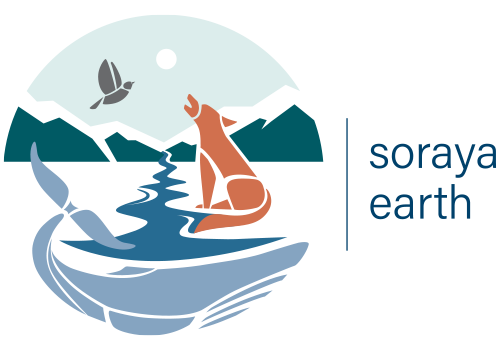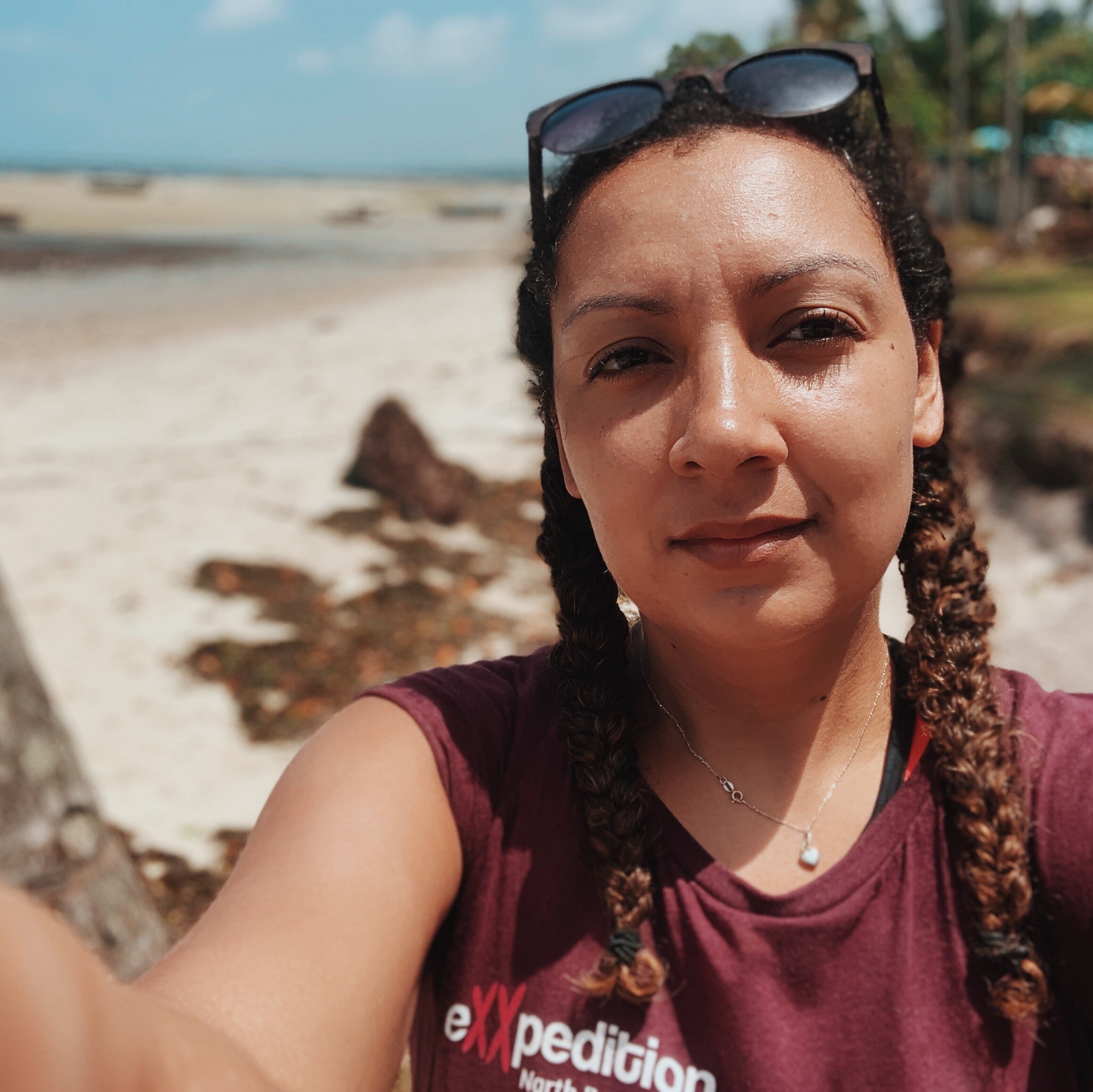Remote hair care for curly hair
Managing 3B/ 3C curls on small islands and beyond
My hair can be a nightmare to maintain. And I don’t mean that in a ‘tell me how nice my hair is’ way. I mean that in a ‘Urgh, do I really have to wash it because brushing it out will take so long?’ way. I am mixed race, and my hair falls somewhere between curly hair categories 3B and 3C.
For many years from my early teens, I had it professionally relaxed at the hairdressers and would use hair straighteners several times a week to force it into some sort of compliance. This ruined the condition of my hair and it would consistently break off, never growing much below my shoulders. On top of that, relaxed or not, straightening my hair takes about three hours – no one has time for that. Especially not someone like me who likes a 15-minute turnaround for getting ready. About six years ago, I stopped having my hair chemically relaxed (my hair and my purse thanked me) and for the last few years I’ve been trying to embrace a more natural style for my everyday look.
Hair care when travelling
As someone who loves travel and adventurous activities, my hair care is something I have to carefully consider for every trip. If going somewhere remote for a long period, I would cut it much shorter to make it easier to manage.
When going to Mafia Island (a tiny island south of Zanzibar) in January 2019 for two weeks, I didn’t want to cut it. I wanted to bask in the benefits of my newly-found intensive care regime over the months before. It was also only for two weeks – how hard could that be to manage, right? However, I was not completely oblivious to the fact I’d have to think this through. My trip was to carry out whale shark conservation in the Indian Ocean (saltwater) and the place I was staying had a pool (chlorine), and it was going to be around 30 degrees and humid (frizz-fest).
Managing my hair in the UK
When based at home, I follow the below hair regime:
Day 0:
Wash hair
(I’ve just transitioned to Bower Collective shampoo and conditioner, which come in pouches which can be emptied into reusable glass containers – the pouches are then returned to Bower for reuse)
After washing, I apply hair oil (Argan based - haven’t found an appropriate plastic-free alternative to this yet, suggestions welcome) and then brush through with a basic hairbrush that I’ve owned for about 15 years
Plait into pig tails, I never let it dry without plaiting it first. This lengthens it out and helps to prevent frizzing.
Day 1-2:
Wear in pigtails
Day 2-3:
Wear half up, half down (I do this to reduce the volume around my face as my hair expands throughout the day once loosened!)
Day 3-4:
Wear in a pony tail
Day 4-0:
Wear in a bun. Restart process, wash.
Why doesn’t this translate well to an island?
Sounds like it might be easy to maintain when away right? Well there are several challenges to island hair care.
1. I use a lot of conditioner and hair oil on my hair. This is heavy and bulky to transport, and also runs the risk of exploding products in the hold baggage and covering all my clothes. For this particular trip, my luggage allowance was capped at 15kg due to the tiny plane I had to take on the internal flight from Dar to Mafia. I could not take this much with me.
2. Unknown water pressure – to wash my very thick, curly hair I need quite a lot of power behind the water to really wash it through properly. You cannot guarantee you’ll have this in a more remote location or that there will be enough water to keep going until it’s washed through (and you definitely can’t guarantee that you won’t use all the hot [lukewarm/ cold] water and annoy your fellow visitors).
3. Saltwater, hot humid weather and chlorine are all incredibly drying for any hair, but particularly for mine which has a tendency to be dry. This means my regular routine is probably not appropriate to maintain my hair condition.
What I did to manage my mixed race hair on an island
1. Switched my shampoo and conditioner to hard bars in tins from Lush (Jason and the Argan Oil shampoo and Jungle conditioner) to reduce my luggage weight. I was worried about making the switch, because I have heard some not very flattering things about the effectiveness of hair care bars. The funny thing is, the complaints were about them being too heavy and difficult to wash out. In practice, this was of benefit to me and my hair seemed to really like them. The weight of the products helps to combat the humidity and reduced volume. So much so that I have considered switching permanently, because I am always trying to reduce my single-use plastic use, too.
I allowed myself three 100ml bottles of my hair oil, because I have not yet found a suitable alternative to using this.
2. As I expected, the water pressure was fine but it wasn’t fantastic, and sometimes we ran the water dry. We’d be in the sea in the morning and then the pool in the afternoon, so when I got back from the beach I’d quickly shower and simply run the water over my braided hair to take out some of the salt. I’d do the same after being in the pool to get rid of the chlorine. Then every couple of days I would wash it properly with the shampoo and conditioner bars, and apply my hair oil, brush it through and replait.
3. With the change in both the conditions and my hair care products, I was expecting more damage, but I didn’t see any major change in the condition of my hair at all. It seemed to almost enjoy being wet most of the time.
What would I do differently next time?
My hair oil had a minor explosion in my bag. As well as not successfully finding a plastic-free alternative to buying it, I’ve also struggled to find a suitable way to transport it. I’ve filled silicone reusable bottles in the past, and they have also leaked. There needs to be an alternative to this, but I have yet to find it.
Advice for more extreme environments: Leave No Trace
This particular trip was pretty luxurious. On Mafia Island we stayed in the Bustani B&B – a locally owned and run establishment with air conditioned bedrooms and ensuite bathrooms with warm plumbed showers. This informed my product choices. In some eco lodges and hotels, they will require you use officially biodegradable/ pH neutral products as they are using delicately balanced natural filters on their waste water. Ideally, we should be using these products anyway – all waste water has to go somewhere!
I have also been on trips where there are no showers at all, and all washing is done in fast-moving rivers, the sea or lakes. In these situations, you just have to bend to what's best for the environment and to hell with the hair care. You should not be using products at all in natural water sources – it can impact the delicate balance of the local ecosystems even when biodegradable. Just jump in and scrub yourself with the water. I guarantee you will be clean enough for most trips. It's worth noting that out of all the wild washing options saltwater is the grossest and leaves you feeling a little crusty – I'll leave it to your discretion as to how necessary that wash is.
If you really have to use soap (for yourself or your kit)
- wash at least 30 metres from the water source
- make sure that all products you are using are as environmentally friendly as possible (truly biodegradable and pH neutral)
- dig a hole of at least 6 inches and pour your waste water in there. This gives it the best chance of breaking down efficiently and safely.
Over the last few years for these types of trips I've used Lifeventure Allpurpose Soap for my hair, body and clothes! It's available from most good outdoor retailers and was, for a long time, the only commercially available option. I've seen a few more different options come on the market recently but I have not tried them yet – when you are considering them check that they are biodegradable and pH neutral. Because of the remote nature of these journeys, I'd tend to do a minimum amount with my hair and mostly just leave it plaited until I can get to a 'real' shower.
The key to reducing hair (and environmental) damage when you travel tends to be in the preparation. Take the time to think about what you really need and what will be available to you. Always expect the facilities to be less than are listed. In really remote environments, go for damage limitation only and lower your expectations. Nature doesn't care what you look like anyway and everyone else will be in the same situation – if you like a selfie, work out a way to keep it tidy and out of the way. And stock up on some intensive conditioner for some rescue care when you get home. A bit of hair damage is a small price to pay for the experiences you will have.
Do you have any advice for hair care on islands or in remote environments? Please share them in the comments!
If you liked this post, you can subscribe to my newsletter to receive my writing on nature, sustainability, outdoor activities and travel straight into your inbox. If you have found my content useful and want to support my writing, you can buy me a coffee here.
The Lifeventure soap link in this post is the only affiliate link on this page – if you purchase through this link, I may receive a percentage of the sale at no extra cost to you. Affiliate purchases help me continue to produce my content for free.







